SUMMARY
This is AI generated summarization, which may have errors. For context, always refer to the full article.
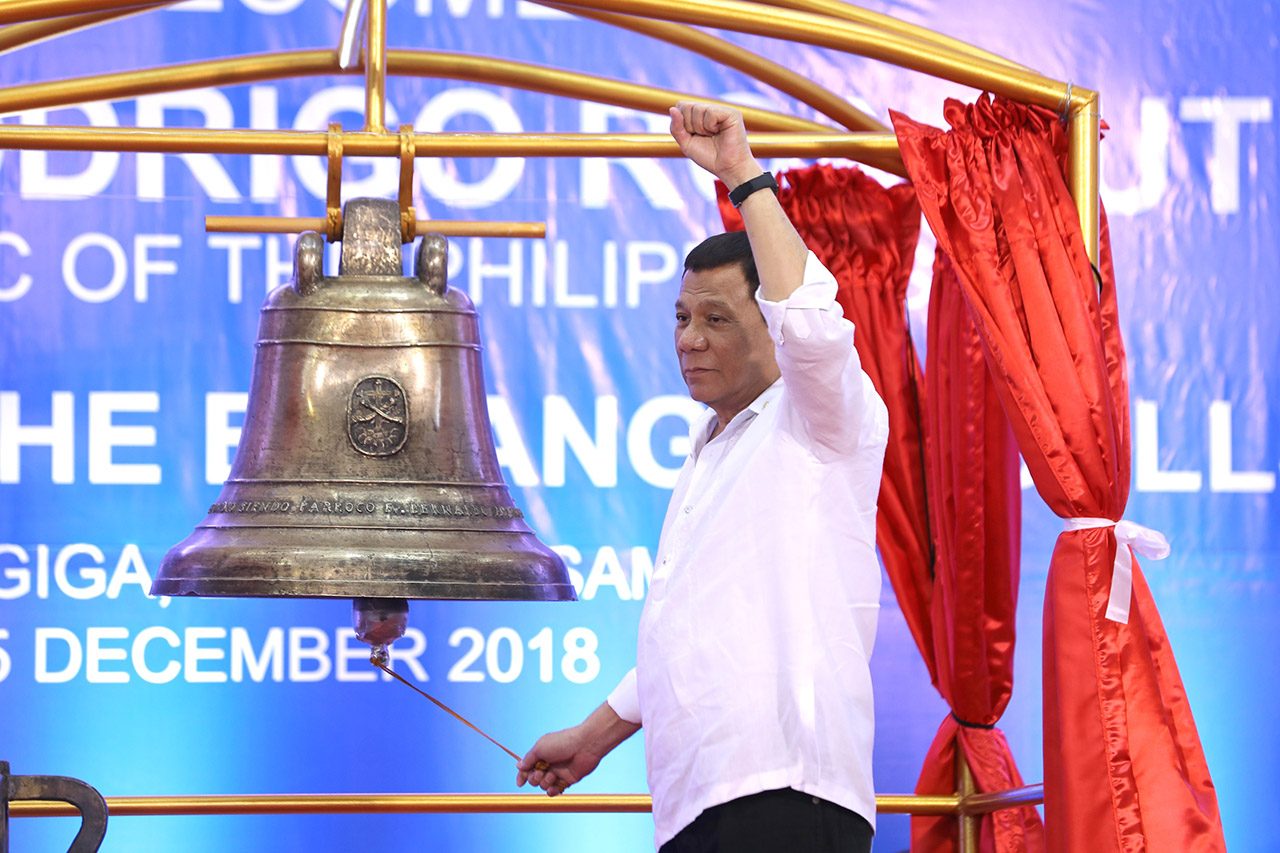
MANILA, Philippines – A “vibrant chapter” in ties between Manila and Washington, was how President Rodrigo Duterte described the United States’ return of the Balangiga Bells to the Philippines toward the end of 2018.
The Philippines’ former colonizer returned the Balangiga Bells 117 years after taking these from Filipinos as spoils of war in 1901.
Duterte’s words sounded like a turnaround. The commander-in-chief had detested the United States for taking the Balangiga Bells and slaughtering Filipinos in the Balangiga Massacre. This is on top of other reasons, such as criticizing his drug war and refusing him a US visa years ago.
Duterte’s anger prompted him to turn to new friends: China and Russia, both rivals of America.
Will the return of the Balangiga Bells stop Duterte’s pivot away from Uncle Sam?
But is there a pivot away from the US in the first place?
On the ground, engagements by the Philippines in 2018 showed it is not moving away from the US despite Duterte’s rhetoric. While the Philippines has China and Russia as its new buddies, the Philippines is sticking it out with its old military ally, the US.
Close ties
A most striking example was a visit by top Philippine officials to Hawaii in May this year.
In May, a Philippine delegation led by Executive Secretary Salvador Medialdea, one of Duterte’s most trusted men, met with US Pacific Command chief Admiral Harry Harris Jr in Hawaii.
Medialdea was accompanied by Defense Secretary Delfin Lorenzana, Ambassador to Washington Jose Manuel Romualdez, then-Foreign Secretary Alan Peter Cayetano, then-Interior and Local Government OIC-Secretary Eduardo Año, and then-Permanent Representative to the United Nations Teodoro Locsin Jr.
It was a sign of the importance attached by the Philippines to the US despite Duterte’s anti-US tirades.
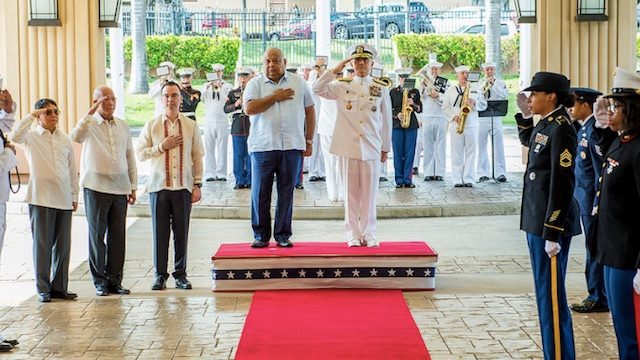
Months later, in December, the commander of what is now known as the US Indo-Pacific Command, Admiral Philip Davidson, met with Duterte and Lorenzana in Manila.
The US also made key donations to the Philippine military in August this year – 4 OV-10B planes to help in the Philippines’ counterterrorism campaign, and an P807-million ($15-million) surveillance and reconnaissance system.
This is on top of the millions in US aid for conflict-stricken Marawi City in the southern Philippines.
The Philippines, too, is set to receive the biggest chunk of security assistance from the US in the Indo-Pacific region, said Deputy Assistant Secretary of State Walter Douglas, who visited the Philippines in August.
‘We only have one security alliance’
Clarita Carlos, a political science professor who specializes in defense and foreign policy, explained why the Philippines and the US maintain such close ties despite the Philippines’ new buddies.
“We only have one security alliance, and that is with the United States of America,” Carlos said in an interview with Rappler.
Carlos referred to the 1951 Mutual Defense Treaty between the Philippines and the United States, where the two countries agreed to defend each other in the case of an armed attack. This is the Philippines’ only defense treaty with another country.
The Philippines’ ties with other countries, Carlos pointed out, “are really like just economic relationships, but nothing equals the Mutual Defense Treaty, the Visiting Forces Agreement, and the Enhanced Defense Cooperation Agreement.”
(Below, watch scenes from this year’s Balikatan exercises between Philippine and American troops in Zambales.)
Carlos believes that Duterte changed his mind about America after 2016, when his anti-US rhetoric included a military and economic “separation from the United States.”
“He’s learning along the way, and while he might have articulated an anti-American rhetoric at the start, I think he has backpedaled from that,” Carlos said.
“He’s learning because he’s finding out the realpolitik on the ground. And that’s good. It’s bad if at the start you already have something in mind and you don’t change your mind. It’s good that he’s changing his mind given the new realization of the security environment,” she said.
No pivot away from Washington
Carlos said the Philippines is not pivoting away from the US.
“No, I don’t think we will do that. Independent foreign policy simply means – if Trump has an America First, we also have our Philippines First. Whichever will serve our interests, we will go there,” she said.
Referring to Duterte, she added: “You will notice he will go to Latin America, he will go to the Caribbean, he will go anywhere so long as they will buy our mangoes, pineapples, et cetera. That’s how pragmatic he is.”
For Carlos, Duterte “has done quite well because he has gone to other countries which are nontraditional partners.”
In this aspect, 2018 was noteworthy because of the historic state visit of Chinese President Xi Jinping and the Philippines’ heightened engagements with Russia, including the first time a Philippine Navy vessel made a port call to Vladivostok.
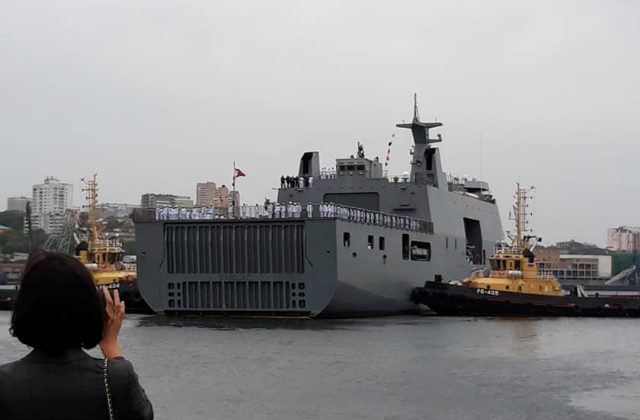
Carlos said the Philippines stands to benefit from nontraditional partners as well. One of the possible gains is in responding to disasters.
On the Chinese military, for example, Carlos said, “Like us, they are also confronted with earthquakes, landslides, typhoons. We have the same disasters. And with them, because they have more advanced technology, they can really help us.”
On Russian troops, she added, “Russia now is in the forefront of pivoting into Southeast Asia, and that is good. And they also want to train with us, isn’t it? They have a defense attaché from Moscow.”
Warnings vs China, Russia
But experts also warned against the Philippines’ security arrangements with China and Russia.
Military historian Jose Antonio Custodio noted that China is not an ally but actually a rival in the West Philippine Sea or South China Sea. He said Russia on the other hand is offering military equipment that the Philippines might not be able to maintain.
Custodio also noted the “unauthorized or unmonitored” landing of Chinese planes in Davao City, hometown of Duterte, in June this year.
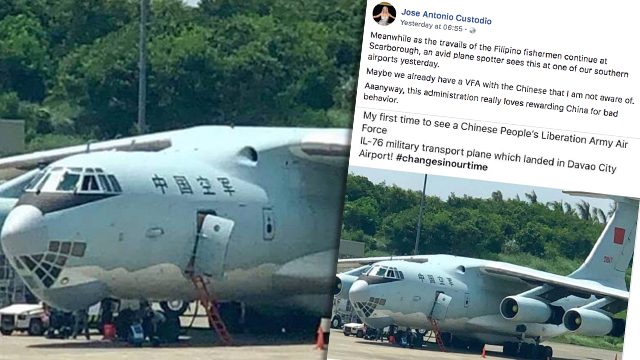
Custodio told Rappler: “The China relationship is not clearly defined and hence is prone to being taken advantage of by individuals within the Philippines who want to curry favor with China. That’s why you have unauthorized or unmonitored Chinese entry into the Philipppines, like in the Port of Davao.”
“So it becomes personalized now. It’s a dangerous precedent because protocol is not followed and protocol is set up to protect our national interests also,” Custodio said.
He added, We have to input here that China is not an ally. It’s actually a country we have a major territorial dispute with.”
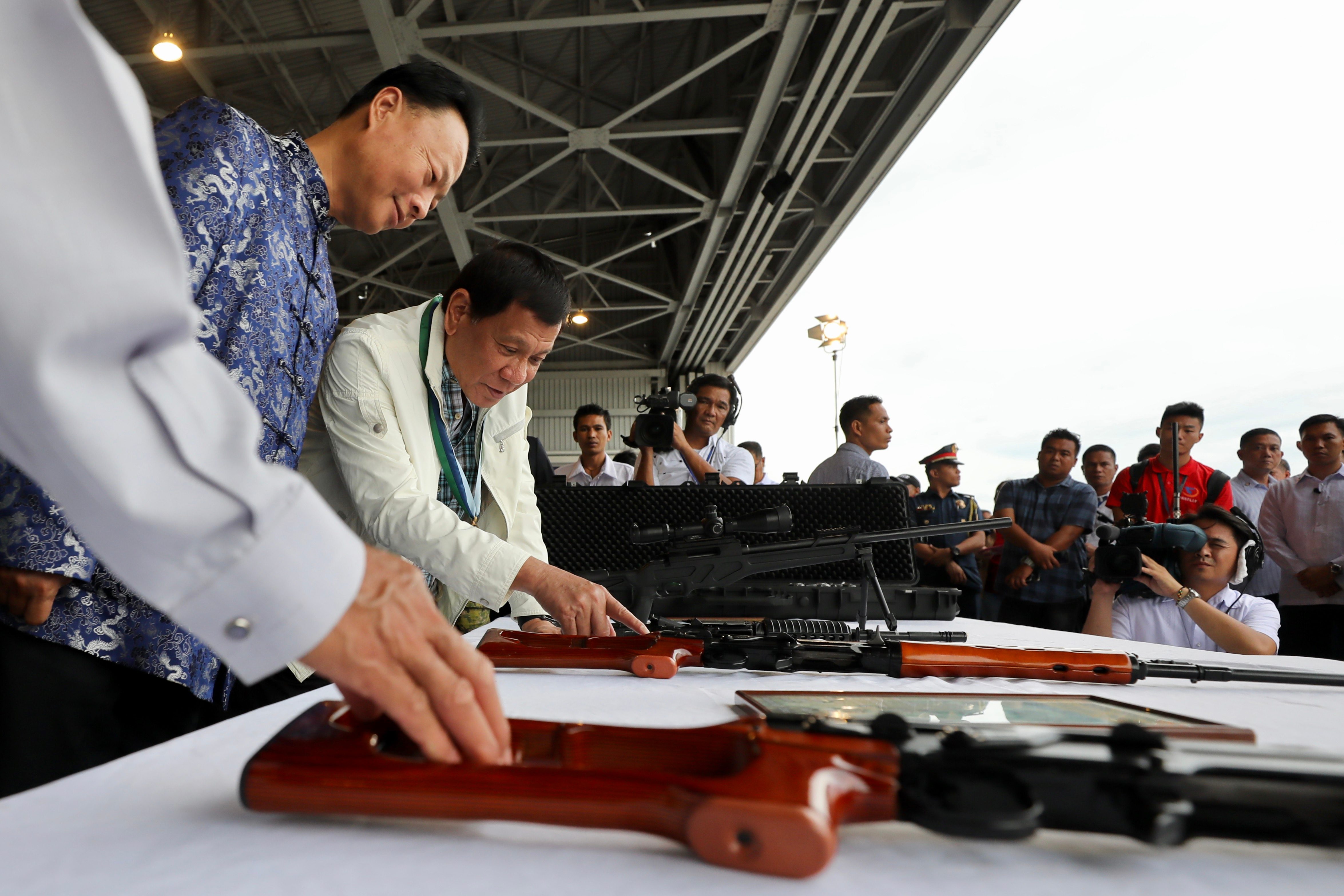
On Russia, Custodio cautioned the Philippines against buying Russian equipment. A US official also cautioned against this in August, prompting another outburst from Duterte.
“Do we have the capacity to buy and maintain? That’s the big problem. So we will end up in a situation where we can actually purchase Russian equipment, but in the long run they will not be properly maintained so you end up losing money,” Custodio said.
The Armed Forces of the Philippines, he said, should be the last word on purchasing weapons. “Hindi dapat manggagaling ‘yan from whatever Poncio Pilato (That decision should come from just any Pontius Pilate).”
Custodio said purchasing “small items” from China and Russia is fine, “but not big-ticket items.”
“Don’t get it from them because at the same time you have to take into consideration also that their actions are actually aimed to disrupt our own long-standing alliance with the United States, so every decision that we make must be evaluated by the National Security Council,” Custodio said.
The Philippines’ alliance system with the US, he explained, “is our last card in fending off China’s territorial ambitions.”
Carlos also stressed the value of maintaining ties with America. “You are part of the security alliance of the US in Southeast Asia, with Japan, South Korea, Australia, and New Zealand. Why, would you like to be in the sphere of China and Russia? These are not democracies. Isn’t that plain? We are a democracy also.”
In an interview with ANC, US Ambassador to the Philippines Sung Kim said, “It is important to remember that we are the only alliance you have, and I don’t think your improving relations with other countries, whether it’s China or some other country, would replace the alliance you have with the United States.”
Time to review Treaty?
But as 2018 ends, questions still hound the 67-year-old MDT.
On December 20, according to CNN Philippines, Lorenzana said he will push for a review of the MDT “to make it stronger.” While the US “is the only country we have an alliance with,” Lorenzana pointed out that the US is “very ambivalent” if the MDT covers islands in the West Philippine Sea.
This is one of the Duterte’s misgivings about the US – that America is supposedly unwilling to defend the Philippines in case China attacks it. (READ: [OPINION] Proposed review of PH-US Mutual Defense Treaty: Opening a Pandora’s box)
On the same day that Lorenzana made this statement, Philippine Foreign Secretary Teodoro “Teddyboy” Locsin Jr met with his American counterpart, US Secretary of State Michael Pompeo, to discuss a range of issues including the West Philippine Sea dispute.
In this December 20 meeting in Washington DC, Pompeo “reaffirmed the enduring US-Philippines alliance, including commitments under the Mutual Defense Treaty of 1951.”
It is worth recalling that Locsin, in one of his first speeches as foreign secretary, had classified countries as “friends,” “enemies,” and “false friends.”
(Locsin had told the diplomatic corps on November 7: “It is a refinement of the earlier one which stood us in good stead: ‘Friends to all, enemies to none.’ But we are moving on to a refinement which addresses changing realities. It is now ‘Friends to friends, enemies to enemies, and worse enemies to false friends.'”)
With the US or its rivals China and Russia, how secure – or insecure – would the Philippines be in the coming years? – Rappler.com
Add a comment
How does this make you feel?
There are no comments yet. Add your comment to start the conversation.